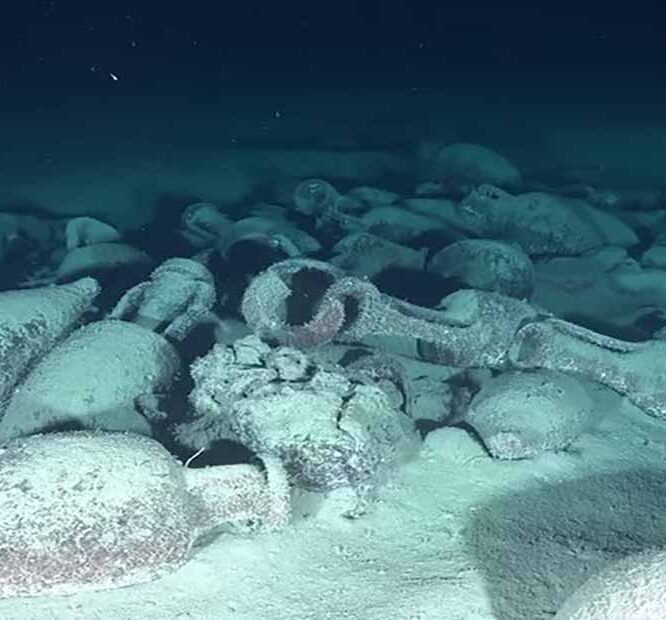Three Roman Shipwrecks Discovered Off Tunisian Coast – One Is 2,000-Year-Old
It’s impossible to say how many Ancient shipwrecks can be found throughout the Mediterranean. Many civilizations, such as Egyptians, Phoenicians, Romans, and Greeks, were constantly present in the Mediterranean, either trading and exploring or they were engaged in marine battles.
The Mediterranean is often called an underwater graveyard, and many shipwrecks have been discovered beneath the waters.
The maritime route along the Skerki Bank was of special importance being used by conquerors and treasure looters.
An international team of underwater archaeologists explored the area bordered by Sicily in the north and the Tunisian coast to the southwest to learn more about ancient marine time activities.
The ambitious and large projects consisting of Unesco experts from Algeria, Croatia, Egypt, France, Italy, Morocco, Spain and Tunisia mapped an area of seabed 10km square in an effort to study and protect their shared underwater cultural heritage.
Scientists used two robots and multibeam sonar to document the remains of six shipwrecks dating from ancient times to the 20th century, three of which were previously unknown.
Underwater Cultural Heritage Must Be Protected
In an interview with the National, UNESCO archaeologist Alison Faynot explained the importance of protecting the shipwrecks as they are part of our heritage.
“Underwater heritage is very important. You think it is extremely protected and unreachable and yet it is quite fragile, and just a change in the environment or seabed can have a very dangerous impact on it.

People see underwater cultural heritage as a treasure and something to collect, but it is really significant. All its little details give us so many clues about where we come from.
In the Mediterranean, it shows why it means so much since eight countries are involved and have come together because they want to share their heritage.
Underwater cultural heritage is not a treasure, it is vulnerable and because of it we really need to protect it and educate people in protecting it,” Faynot told the National.
This kind of “underwater heritage is vulnerable to exploitation, trawling and fishing, trafficking and the impacts of climate change, which is why the mission’s aim was to demarcate the precise zone in which many shipwrecks lie and to document as many artifacts as possible.”
The UNESCO mission has been successful. Using a robot called Hilarion, which spent 18 hours underwater, to verify and document the targets of the newly mapped area, and multibeam sonar, the team discovered three previously unknown Roman shipwrecks.
According to the National, one of the wrecks is believed to be a merchant vessel dating as far back as the 1st century B.C. The two others are a metal vessel and a wooden vessel, from the late 19th or early 20th centuries.
The UNESCO underwater robots filmed 400 hours of video footage and took over 20,000 images.
The discovery of three Roman shipwrecks on the Tunisian shelf is caused great excitement among scientists as the submerged ships “might represent for other as-yet secret archaeological remains lying on the seabed.”
Scientists did not retrieve any of the ancient underwater objects because they want to come back to these sites with more advanced technology.




